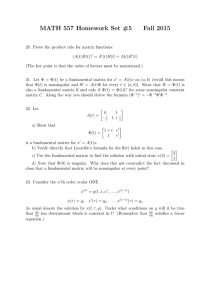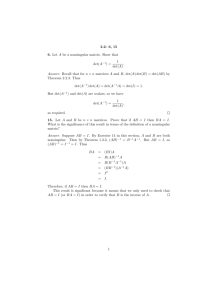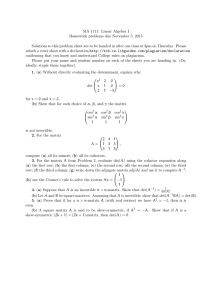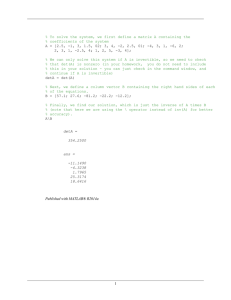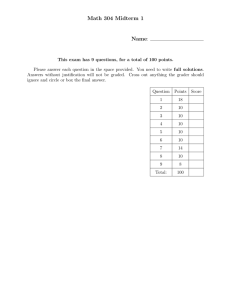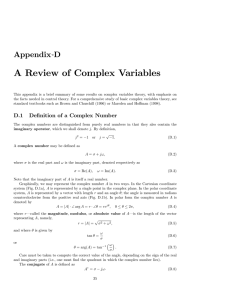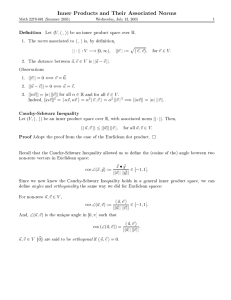Math 222 - Selected Homework Solutions from Chapter 4
advertisement
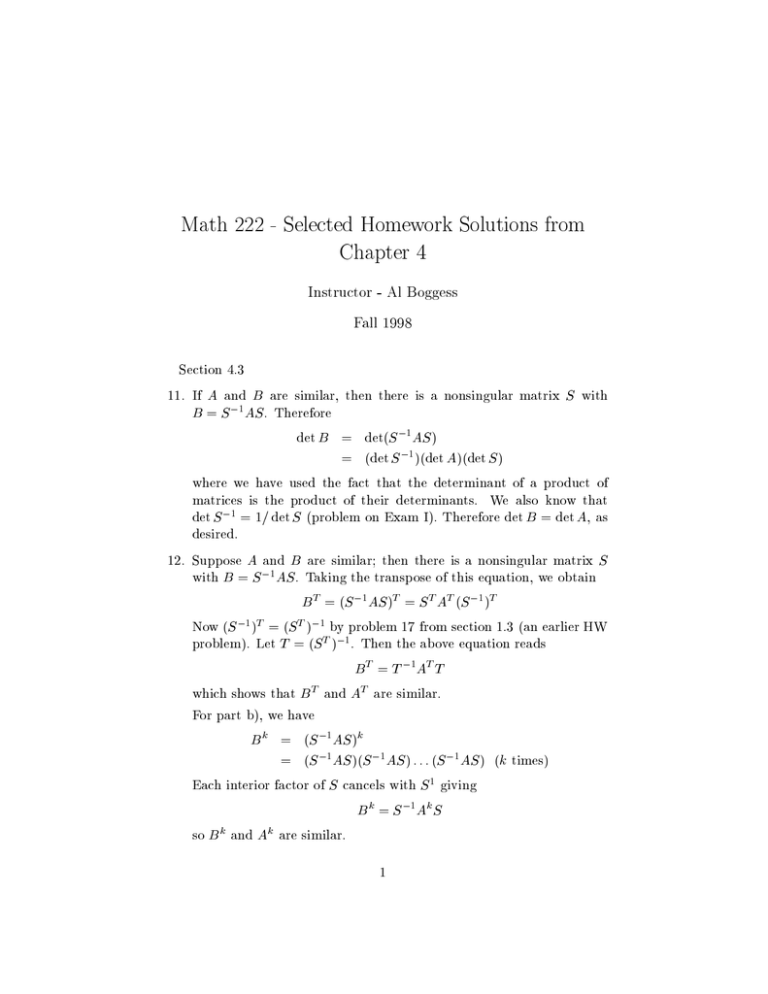
Math 222 - Selected Homework Solutions from Chapter 4 Instructor - Al Boggess Fall 1998 Section 4.3 11. If A and B are similar, then there is a nonsingular matrix S with B = S ,1 AS . Therefore det B = det(S ,1 AS ) = (det S ,1 )(det A)(det S ) where we have used the fact that the determinant of a product of matrices is the product of their determinants. We also know that det S ,1 = 1= det S (problem on Exam I). Therefore det B = det A, as desired. 12. Suppose A and B are similar; then there is a nonsingular matrix S with B = S ,1 AS . Taking the transpose of this equation, we obtain B T = (S ,1 AS )T = S T AT (S ,1 )T Now (S ,1 )T = (S T ),1 by problem 17 from section 1.3 (an earlier HW problem). Let T = (S T ),1 . Then the above equation reads B T = T ,1AT T which shows that B T and AT are similar. For part b), we have B k = (S ,1AS )k = (S ,1 AS )(S ,1 AS ) : : : (S ,1 AS ) (k times) Each interior factor of S cancels with S 1 giving B k = S ,1 Ak S so B k and Ak are similar. 1 13. Suppose A and B are similar; then there is a nonsingular matrix S with B = S ,1 AS . The inverse is computed as B ,1 = (S ,1AS ),1 = S ,1 A,1 (S ,1 ),1 = S ,1 A,1 S The inverses of both A and S exist since they are nonsingular. This shows that B ,1 exists and that B ,1 and A,1 are similar. Section 5.1 1d Using the law of cosines h,2; 3; 1i h1; 2; 4i = p 8p cos = jh, 2; 3; 1ij jh1; 2; 4ij 14 21 Therefore the angle is = arccos( p 8p ) 62:2o 14 21 7b The plane is given by the equation hx , 4; y , 2; z + 5i h,3; 6; 2i = 0 or ,3x + 6y + 2z = ,10. 11. To show the triangle inequality, jju + vjj jjujj + jjvjj, we square the right side and use the denition of jjjj2 in terms of the inner product: jju + vjj2 = (u + v) (u + v) = jjujj2 + 2u v + jjvjj2 jjujj2 + 2jjujj jjvjj + jjvjj2 by Schwarz inequality = (jjujj + jjvjj)2 Taking square roots gives jju + vjj jjujj + jjvjj. Equality occurs when u v = jjujj jjvjj, which happens when the angle between u and v is zero, i.e. u and v point in the same direction. 2

